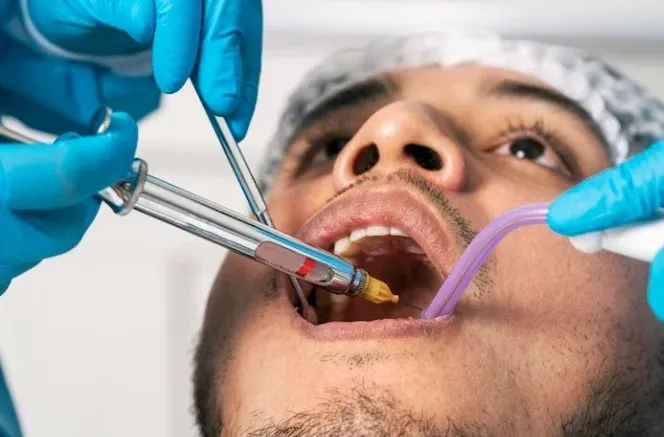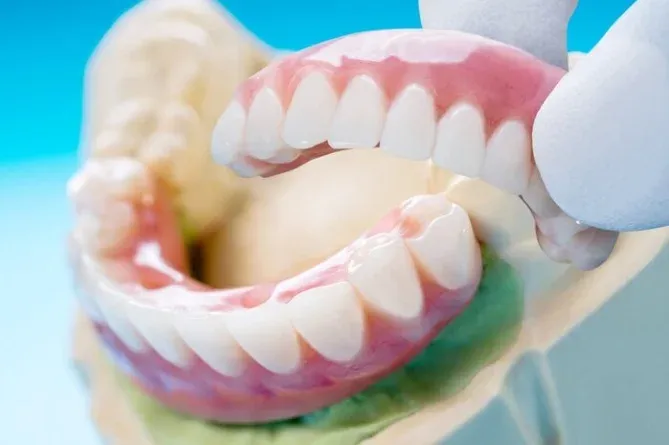First Signs of Wisdom Teeth Coming In: 2026 Expert Guide to Symptoms & What to Expect
The initial indicator of wisdom teeth erupting can vary from person to person, but most commonly,…
The initial indicator of wisdom teeth erupting can vary from person to person, but most commonly, it begins with a mild discomfort or dull ache in the very back of your mouth, just behind your last molars. This sensation might come and go at first, often intensifying in the evening or after eating.
For many people, the gums surrounding the emerging wisdom teeth may become swollen, tender to the touch, or appear noticeably red. You might also notice subtle changes in how your teeth fit together when you bite down, as the new molars begin to shift the positioning of neighboring teeth. Understanding these early warning signs can help you seek timely dental care and maintain optimal oral health throughout 2026 and beyond.
Why it helps: Provides fast-acting numbing relief for wisdom tooth pain and swollen gums during eruption.
Understanding Wisdom Teeth: What They Are and Why They Cause Problems
Wisdom teeth, clinically known as third molars, are the final set of molars that typically erupt between the ages of 17 and 25. While our ancestors needed these extra teeth to grind down plant tissue and raw meat, modern diets and smaller jaw structures have made them largely unnecessary.
The problem is that most people’s mouths simply don’t have enough space to accommodate these late-arriving teeth. When there isn’t adequate room, wisdom teeth can become impacted—meaning they’re unable to fully emerge through the gum line and become trapped against the jawbone, gum tissue, or adjacent teeth. This can lead to a cascade of complications, from infection to damage to neighboring teeth.
The 5 Most Common First Signs of Wisdom Teeth Coming In
1. Pain or Swelling at the Back of Your Mouth
One of the earliest and most noticeable signs is a dull, throbbing pain or visible swelling in the very back corners of your mouth. As the wisdom teeth push through the gum tissue and press against surrounding bone and teeth, you may experience discomfort that intensifies during the late afternoon or evening hours. Some people describe it as a pressure sensation rather than sharp pain.
2. Tender, Inflamed, or Bleeding Gums
As your wisdom teeth begin to break through the gum surface, the surrounding tissue often becomes irritated and inflamed. You might notice redness, tenderness, or even slight bleeding when you brush or floss near the back molars. The gums may feel sensitive to touch, and you might experience a sharp, stinging sensation when eating hot or cold foods.
3. A Small Bump or Flap of Tissue on Your Gums
When a wisdom tooth starts to pierce through the gum line, it often creates a small, raised bump that you can feel with your tongue. This bump might be tender to the touch and could bleed slightly during your oral hygiene routine. In some cases, a flap of gum tissue (called an operculum) partially covers the emerging tooth, which can trap food particles and bacteria.
4. Changes in Your Bite or Jaw Alignment
If your wisdom teeth are pushing against neighboring teeth as they erupt, you may notice subtle changes in how your upper and lower teeth come together when you bite. This pressure can cause jaw discomfort, headaches, or difficulty chewing. If you’re experiencing lower jaw toothache and ear pain on the same side, your wisdom teeth could be the culprit.
5. Difficulty Fully Opening Your Mouth
As wisdom teeth develop and exert pressure on surrounding bones and soft tissues, you might find it challenging to open your mouth completely. This limitation, called trismus, is often most noticeable first thing in the morning or after periods of rest. It can make eating, speaking, and maintaining proper oral hygiene more difficult.
Why it helps: Reduces swelling and numbs pain from erupting wisdom teeth with targeted cold therapy.
How to Tell If Your Wisdom Teeth Are Coming In Correctly
Not all wisdom teeth cause problems—some people are fortunate enough to have adequate jaw space and proper alignment for healthy eruption. Here’s how to assess whether your wisdom teeth are developing normally:
Mild, Temporary Discomfort: Some pain during eruption is normal, but it should be manageable and gradually decrease as the tooth fully emerges. If you’re experiencing extreme tooth pain that prevents sleep, that’s a red flag requiring immediate dental attention.
Straight Alignment: When wisdom teeth erupt correctly, they should come in parallel to your other molars, in a straight vertical line. You can gently feel the emerging tooth with your tongue—it should feel aligned with your second molars, not angled toward your cheek or tongue.
Minimal Swelling: While some redness and mild swelling are expected, excessive or prolonged inflammation suggests complications. The swelling should gradually subside as the tooth emerges, not worsen over time.
No Bite Changes: Your upper and lower teeth should continue to fit together comfortably. If you notice your bite feels “off” or you’re experiencing jaw clicking or popping, your wisdom teeth may be causing crowding or misalignment.
Regular dental checkups in 2026 should include monitoring of your wisdom teeth through clinical examination and periodic X-rays. Your dentist can track the development and positioning of these teeth long before they cause symptoms, allowing for proactive treatment planning if necessary.
Impacted vs. Normally Erupting Wisdom Teeth: Key Differences
Understanding the distinction between impacted wisdom teeth and those that are simply in the process of normal eruption is crucial for determining whether intervention is needed.
Definition and Cause
A wisdom tooth that’s “coming in” is following the natural eruption process—gradually breaking through the gum line and emerging into the mouth. This is a normal developmental milestone. An impacted wisdom tooth, however, is one that cannot fully emerge due to physical obstruction from bone, soft tissue, or adjacent teeth, or because it’s positioned incorrectly in the jaw.
Eruption Pattern
Normally erupting wisdom teeth will eventually break completely through the gum surface and become fully functional teeth in your mouth. Impacted wisdom teeth remain partially or completely trapped beneath the gum line, unable to emerge properly. There are several types of impaction: soft tissue impaction (covered by gum), partial bony impaction (partially covered by bone), and complete bony impaction (fully encased in jawbone).
Symptom Duration and Severity
Teeth that are erupting normally may cause temporary discomfort, tenderness, and mild swelling that gradually improves as the tooth emerges—typically over several weeks to a few months. Impacted teeth, on the other hand, often cause persistent or recurring pain, chronic inflammation, and may lead to complications like infection, cyst formation, or damage to adjacent teeth. If you’re wondering about how long wisdom tooth growing pain should last, persistent symptoms beyond a few weeks warrant professional evaluation.
Treatment Needs
Normally erupting wisdom teeth that are healthy, properly positioned, and don’t cause crowding typically don’t require treatment beyond good oral hygiene and monitoring. Impacted wisdom teeth frequently require surgical extraction to prevent or address complications. In 2026, dental professionals use advanced 3D imaging to assess impaction severity and plan the most conservative treatment approach.
Why it helps: Gently cleans around erupting wisdom teeth and hard-to-reach areas where food gets trapped.
When to See a Dentist About Your Wisdom Teeth
While some discomfort during wisdom tooth eruption is normal, certain symptoms require prompt professional evaluation:
- Severe or worsening pain that doesn’t respond to over-the-counter pain relievers
- Significant swelling of the gums, jaw, or face that persists or increases
- Signs of infection including fever, pus drainage, or a foul taste in your mouth
- Difficulty swallowing or breathing, which could indicate a serious infection
- Persistent jaw stiffness that limits your ability to open your mouth
- Bleeding that doesn’t stop with gentle pressure
- Visible crowding or shifting of your other teeth
Early intervention can prevent more serious complications down the line. Your dentist can assess the situation through clinical examination and imaging, then recommend the most appropriate course of action—whether that’s watchful waiting, improved oral hygiene techniques, or surgical extraction.
Managing Wisdom Tooth Discomfort at Home
While you’re monitoring your wisdom teeth or waiting for a dental appointment, these strategies can help manage discomfort:
Salt Water Rinses: Gently swish warm salt water (1/2 teaspoon salt in 8 ounces of warm water) around your mouth several times daily to reduce inflammation and keep the area clean.
Cold Compresses: Apply an ice pack to the outside of your jaw for 15-minute intervals to reduce swelling and numb pain.
Over-the-Counter Pain Relief: Ibuprofen is particularly effective for wisdom tooth pain because it addresses both pain and inflammation. Always follow package directions and consult your dentist about the best painkiller for tooth nerve pain in your specific situation.
Soft Foods: Stick to soft, cool foods that don’t require much chewing and won’t irritate sensitive gum tissue.
Proper Oral Hygiene: Continue brushing and flossing carefully, paying special attention to the back of your mouth. Be gentle around tender areas but don’t neglect them—bacteria accumulation can worsen symptoms.
The Bottom Line: Stay Proactive About Your Wisdom Teeth
Recognizing the first signs of wisdom teeth coming in empowers you to take proactive steps toward maintaining your oral health. Whether your wisdom teeth erupt normally or become impacted, early detection and professional monitoring are key to preventing complications.
In 2026, with advanced diagnostic tools and treatment options available, there’s no reason to suffer through wisdom tooth problems. If you’re experiencing any of the symptoms described in this guide, schedule an appointment with your dentist for a thorough evaluation. They can determine whether your wisdom teeth are developing normally or if intervention is needed to protect your smile and overall oral health.
Remember, every person’s experience with wisdom teeth is unique. What’s normal for one person might signal a problem for another, which is why professional guidance is invaluable during this developmental stage.







